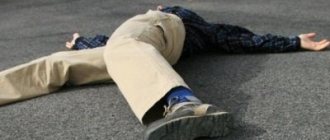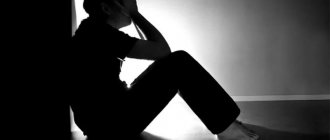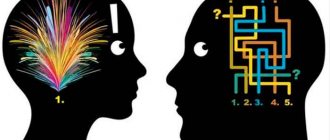A pseudobulbar type of dysarthria appears in a child due to paresis of the muscles of the articulatory apparatus (cheeks, tongue, larynx, lips). More often, the pathology occurs in patients with cerebral palsy (CP). In adults, the disease provokes ischemic damage to brain tissue. Pseudobulbar dysarthria in children occurs after birth injuries, infections and other causes. External manifestations of the disease are characterized by impaired swallowing, sucking, changes in facial expressions, flow of saliva and other manifestations. Therapy of the disease is aimed at eliminating the cause of paresis of facial and articulatory muscles, as well as restoring speech function.
Description of the disease
Pseudobulbar dysarthria is a speech disorder caused by paralysis affecting the articulatory muscles. They are constantly either in hypotonicity - relaxed, or in hypertonicity - overly tense. This occurs due to a rupture of the pyramidal tract, so the influence of the cerebral cortex on the spinal cord segments is disrupted.
Disruption of the connection between the speech apparatus and the central nervous system leads to a malfunction of the muscles responsible for the reproduction of sounds. Problems with the speech motor analyzer arise when there is bilateral damage to the corticonuclear pathways connecting the nuclei of the bulbar nerve endings.
In simple terms, this is a disease in which a child is physically unable to pronounce individual sounds and even words, or fully express his emotions. This usually manifests itself as follows:
- fast or too slow speech;
- unintelligible pronunciation;
- not saying the endings of words;
- distorted pronunciation of sounds or replacing them with others;
- unnatural inactivity of the muscles of the lower part of the face;
- open mouth
- involuntary flow of saliva.
Pathology develops with general lesions of the central nervous system of varying severity, for example, cerebral palsy. Changes manifest themselves in young children, mainly in disorders of sucking, chewing, swallowing, and respiratory dysfunction. It depends on the form of the disease.
A characteristic differential sign of the development of pseudobulbar dysarthria is precisely bilateral paralytic damage to the muscles of the tongue, palate, and larynx. As a result, there is a restriction of movement, articulation and phonation.
In some cases, with bilateral paresis, the degree of damage to one side of the organ may prevail over the other. Sometimes a whole series of involuntary movements are preserved, while voluntary ones simply disappear.
Prevention
Specific prevention of bulbar disorders has not currently been developed. Such pathologies usually develop against the background of other neurological diseases. Doctors advise following the following recommendations:
- Treat head injuries and brain infections promptly and completely.
- Monitor your blood pressure and cholesterol levels. Hypertension and atherosclerosis are fairly common causes of bulbar nerve ischemia.
- Regularly visit a neurologist and, if necessary, do an MRI of the head.
- If you have difficulty pronouncing sounds or swallowing, seek medical help immediately.
- All patients who have suffered a stroke or other neurological pathologies should remain under clinical observation for some time.
These measures will help reduce the risk of bulbar disorders.
Reasons for development
As a rule, pseudobulbar (or erased) dysarthria develops with organic lesions of the child’s brain. They can occur during fetal development, during childbirth, or in early childhood.
Main reasons:
- Perinatal pathologies. These include intrauterine infections, fetal hypoxia, and asphyxia of the newborn. Difficult childbirth can provoke prolonged oxygen starvation of the brain, as a result of which nerve cells die. It will take quite a long period of time to develop all the necessary skills and abilities. Premature children have much more prerequisites for the development of pseudobulbar dysarthria than infants born at term.
- Birth injury. In most cases, it leads to damage to the brain as a whole or its individual structures. These may include nerve endings that provoke the development of dysarthria.
- Premature pregnancy or premature birth.
- Rhesus conflict between mother and child.
- Hydrocephalus, advanced stage of otitis media.
- Traumatic brain injuries. They can cause the development of pseudobulbar dysarthria not only in children, but also in adults.
- Past neuroinfections, such as encephalitis, meningitis. These diseases cause irreversible changes in neural connections and impulses and also do not depend on the patient’s age.
- Hereditary factor. Since the type of nervous system is inherited, the likelihood of developing dysarthria is much higher in those people whose parents also suffered from this disease.
More than half of the cases of pseudobulbar dysarthria are recorded in children with cerebral palsy. Both of these diseases have similar causes.
Diagnostics
At the beginning of the disease, the patient notices that it has become difficult for him to speak and swallow. However, only a specialist can accurately diagnose bulbar dysarthria. Which doctor should I contact for speech disorders? In most cases, articulation disorders are associated with pathological processes in the central nervous system or peripheral nerves. A neurologist diagnoses and treats such diseases. In this case, an additional consultation with a speech therapist is required.
It is very important to differentiate bulbar dysarthria from other types of speech disorders. For this purpose, the following diagnostic examinations are prescribed:
- Examination by a neurologist. The patient has a significant decrease in palatal and pharyngeal reflexes, folding and atrophy of the tongue, and sagging of the palate.
- Consultation with a speech therapist. The specialist determines the clarity, rhythm and volume of speech.
- MRI or CT scan of the head. This study allows us to determine the cause of dysarthria. MRI is often used to detect brain tumors, neurodegenerative pathologies, and the consequences of stroke and trauma. When diagnosing cysts and hematomas of the brain, a CT examination is more informative.
- Doppler ultrasound or duplex scanning. These studies assess blood circulation in the medulla oblongata and bulbar nerves.
- Biopsy. Brain tissue is taken for microscopic examination. They are obtained during surgery or endoscopic examination. This analysis allows you to determine the nature of the tumor or the presence of degenerative changes.
In rare cases, a spinal tap is prescribed. This test is necessary if a brain infection is suspected. Serological analysis of cerebrospinal fluid allows you to identify the presence of pathogens
Symptoms of the disorder
Signs of pseudobulbar dysarthria are considered to be a combination of several manifestations of the disease. This type of neurological disorder is characterized by disturbances in the pronunciation aspect of speech - it is confused, incomprehensible and accelerated. The reason for this is paralysis or paresis of the nerve pairs responsible for this activity.
The sensitivity of certain groups of facial muscles is lost due to damage to the following pairs of nerves:
- 5th – front. Controls facial muscles;
- 7th – trigeminal. Its spectrum of action extends to most of the facial muscles;
- 9th – glossopharyngeal. Responsible for the work of the root and back of the tongue, pharynx, larynx, soft palate;
- 10th – wandering. Its function is to regulate the speech apparatus, respiratory system and diaphragm;
- 11th – additional. Scope of action – neck, shoulder girdle muscles;
- 12th – sublingual. Control of salivation, the work of the lower jaw, the hypoglossal ligament and the tip of the tongue.
In both adults and children, the differential and main sign of erased dysarthria is speech impairment. Regardless of the stage of the disease, the patient’s facial expressions are impaired. Additionally, a number of associated symptoms may be present:
- lack of smooth movements in facial and general motor skills;
- tremor of the tongue or mouth in general;
- hypersolivation;
- pseudo-scandalism;
- tongue deviation to one side;
- nasality;
- spasms of the vocal cords;
- hypertonicity of the posterior pharyngeal wall;
- violations of the swallowing, sucking reflex;
- general slowness of movement and speech rate
In each individual case, the symptoms have their own individual direction, which, in turn, depends on a number of reasons. These include the child's temperament, environment and heredity.
Varieties and their manifestations
In addition to the fact that there are several types of dysarthria, pseudobulbar dysarthria, in turn, occurs in the following forms:
1. Paretic . It is characterized by hypotonia of speech and general skeletal muscles. An increase in tone can be observed with voluntary movements. Paretic changes extend to the soft palate, labial and lingual muscles. Changing body posture is difficult and significantly slower. The movements of the articulatory apparatus are not synchronous with breathing. Excessive drooling or synkinesis is often present. If the voice is loud, then it quickly declines, becoming weak, monotonous, with a nasal tint. The pronunciation of sounds is blurred and unclear. Sucking and chewing reflexes are most often impaired, but not to critical levels.
2. Spastic . It is characterized by hyperkinesia of the muscles of the larynx and lips, spasmodic paresis of the tongue, and impaired tone of the soft palate. Speech is monotonous and nasal. Maintaining and changing articulatory posture causes difficulties; silent articulation is often present. The speech muscles are in constant tension; they are activated by spasms of the labial and tongue muscles. Sucking and swallowing cause certain problems, breathing is irregular and weak. The exhalation is short, and speech can be while inhaling. During spasmodic manifestations, the child cannot maintain the pace of conversation, so he deliberately uses short phrases or individual words. The meaning of speech is preserved, but intelligibility is quite low and depends on the voice data.
3. Mixed . The most common form of pseudobulbar dysarthria. The complexity of the disease lies in the fact that neighboring muscle groups are under varying degrees of tension. For example, the cheeks and lips are in increased tone, and the muscles of the tongue are not tense enough.
4. The most severe form is anarthria , which is characterized by deep muscle lesions and a complete absence of voluntary motor skills in both the speech and articulatory apparatus. The face of a child suffering from this form of the disease resembles a mask with its mouth constantly open. The tongue lies motionless at the bottom of the oral cavity, and lip movements are severely limited. Chewing and swallowing are difficult. There is no intelligible speech at all; sometimes the baby pronounces individual sounds. With pseudobulbar dysarthria, manifestations such as decreased muscle functionality of the tongue, hypersalivation, and choking are observed. These differential signs of the disease can be noticed already in the first year of a child’s life. Over time, other symptoms join them. In speech activity, the pronunciation of sonorant, whistling and hissing sounds suffers. These manifestations are characteristic of all forms of the disease.
Peculiarities
The most common is mild dysarthria of moderate severity. However, it can also be corrected better than other types.
A child in this stage of dysarthria cannot perform such seemingly simple actions as:
- puffing out the cheeks;
- lip stretching;
- turning the tip of the tongue to the sides or up;
- tightly closing the lips and holding this position.
When pronouncing words, the child involuntarily replaces voiced consonants with voiceless sounds. Because of this, speech is slurred and slurred. Impaired functioning of the muscles of the vocal girdle adds a characteristic squelching sound to pronunciation.
Over time, the child begins to feel embarrassed about his diction, seeing that those around him do not understand him and are constantly trying to correct him. As a result, he isolates himself, becomes withdrawn, and limits his contacts with peers and adults as much as possible.
With pseudobulbar dysarthria, disorders of general motor skills are quite often observed, and differentiated fine motor skills of the hands are especially affected.
Psychological and pedagogical characteristics
In the absence of serious injuries, the clinical and psychological picture is as follows:
- Delayed development of fine motor skills
- Clumsiness
- Limited or uncoordinated mobility
- Tremor of limbs
- The psychological and pedagogical characteristics of children with dysarthria are related to the fact that it is difficult for children to complete simple tasks necessary for school (writing, drawing, making applications). Difficulties may arise in communicating with peers. Uncomfortable questions and banter from classmates, sympathetic glances from teachers - this will create a feeling of loss and isolation.
Treatment methods
Since erased dysarthria is a neurological problem, then, accordingly, you will need the help of a neurologist. Although the speech therapist also takes an active part in the treatment process. Neurological tests are carried out, the results of which provide grounds for further research into the anamnesis.
To accurately diagnose the disease, you will need to undergo the following examinations:
- MRI or echo examination of the brain;
- electroneurography;
- electromyography;
- electroencephalography;
- transchannel magnetic stimulation.
Magnetic resonance imaging of the brain makes it possible to detect damage to its structure, the presence of neoplasms or an inflammatory process. Other studies help determine the extent of the lesion in order to select the correct and most effective treatment method.
Properly selected individual therapy can achieve positive dynamics in the development of the disease.
The method of treating pseudobulbar dysarthria is determined by a neurologist or psychoneurologist together with a speech therapist. Depending on the type and stage of the disease, the following methods are used:
- correction using speech therapy techniques;
- drug therapy;
- course of massage sessions;
- exercise therapy;
- breathing exercises.
Manifestations of dysarthria, even if they do not disappear completely, become controlled and practically unnoticeable. The action of pharmacological drugs is aimed at alleviating the symptoms and general condition of the patient.
Identification of dysarthria
Dysarthria with normal psychophysical development in a child manifests itself in the form of the following symptoms:
- Slurred, monotonous and unintelligible speech;
- Increased salivation;
- Relaxed lips and tongue;
- Distortion of sounds;
- "Nasal" speech;
- Quiet voice.
Since these signs are very similar to other speech defects, dysarthria must be diagnosed using special equipment. Primary information can be obtained from a neurologist who conducts tests and also studies the history of pregnancy and the further development of children. More accurate results become available after undergoing an MRI. In addition, the doctor may prescribe electromyography, neurosonography and other research methods. In addition to a neurologist, the child must be shown to a specialist.
Forecast
Children with diction problems have always been and are a reason for ridicule among their peers. Therefore, in order not to complicate life for your child and yourself, you should determine the cause of speech disorders as early as possible. As the baby develops mentally and physically, his communication style develops. If adult family members understand him, do not make comments and do not seek help from a specialist, then the child is sure that he pronounces sounds correctly, although in fact this is not the case.
Pseudobulbar dysarthria detected at an early age makes it possible to correctly develop a treatment method and prevent progression of the disease. All children have a chance to recover, given the availability of modern interactive treatment methods.
Classes with a speech therapist are held in the form of an exciting game. The child himself does not notice when he begins to pronounce this or that letter or their combinations.
However, positive dynamics are not always observed. In severe forms of cerebral palsy, therapy does not give the desired effect.
In general, the prognosis for this disease is not very optimistic. It is almost impossible to completely restore the sensitivity of nerve endings. Patients with pseudobulbar dysarthria simply need to learn to live with their illness.
Types of dysarthria
There are several degrees of dysarthria:
- 1st degree (the mildest form). As a rule, the pathology is invisible to parents and others and is revealed only during an appointment with a specialist. Even if parents suspect something, they hope that these temporary speech impediments will soon pass. In many cases this happens, but if the situation does not improve, the child should be shown to a specialist.
- 2nd degree. Everyone understands the child’s speech, but speech defects are very noticeable.
- 3rd degree. The child’s speech is understood only by parents and other relatives who constantly communicate with him. It is difficult for others to understand the child.
- 4th degree. The child’s speech is incomprehensible or difficult to understand by loved ones.
Grades 3 and 4 are quite obvious, so you should take your child to a specialist with this problem. But mild forms of dysarthria often go unnoticed by parents, especially if in all other respects the child is completely healthy. Meanwhile, it is better to correct at an early stage, otherwise it will begin to progress.











